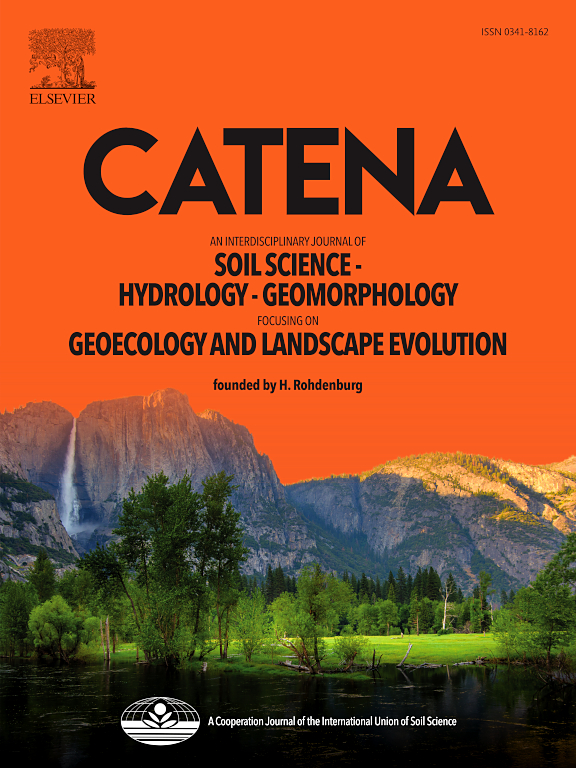A lake-depth study of Late Glacial and Holocene oxbow deposits using parallel paleoecological and sedimentological analysis
IF 5.4
1区 农林科学
Q1 GEOSCIENCES, MULTIDISCIPLINARY
引用次数: 0
Abstract
This study aims to determine the depth of paleo-oxbow lakes through analyses of subfossil cladoceran, pollen, lithological, geomorphological, sedimentological and radiocarbon data. Different approaches to reconstructing the water depth are used. Particular attention has been paid to the results of the comparison of a cladoceran-based water-depth inference model with the results of paleohydraulic estimates based on the geometry of river paleochannels. We show that a trait-based ecological approach using cladocerans gives similar water-depth values for past oxbow lakes as does the approach employing sedimentological and geomorphological data. A Finnish cladoceran-based inference model was used to reconstruct water depth. The results of these reconstructions indicate a depth of ca. 4.3–4.4 m for the onset of the paleo-oxbow development in the Warta River valley. This is in agreement with the sedimentological and geomorphological methods of thalweg calculation for the large Warta River in the Late Glacial, which has radius of meander of 355 m and shows a depth values of 4.3 m. Our research has allowed us to test the usefulness of abiotic and biological methods in estimating the values of paleo-oxbow water depths both regionally and temporally, and the results can be compared to yield a better understanding of ecosystem–climate relationships. Comparison with the results of water-depth estimation using cladoceran and sedimentological methods from other river valleys in central Poland gives the same depths for the paleo-oxbows, which corresponds to their size resulting from adequate discharge during the LG. The estimated oxbow water depth from the Warta River valley during the end of the Younger Dryas was about 2 m, and about 1.3–1.5 m for the Holocene, which is consistent with our studies from the Grabia River valley for this period.
求助全文
约1分钟内获得全文
求助全文
来源期刊

Catena
环境科学-地球科学综合
CiteScore
10.50
自引率
9.70%
发文量
816
审稿时长
54 days
期刊介绍:
Catena publishes papers describing original field and laboratory investigations and reviews on geoecology and landscape evolution with emphasis on interdisciplinary aspects of soil science, hydrology and geomorphology. It aims to disseminate new knowledge and foster better understanding of the physical environment, of evolutionary sequences that have resulted in past and current landscapes, and of the natural processes that are likely to determine the fate of our terrestrial environment.
Papers within any one of the above topics are welcome provided they are of sufficiently wide interest and relevance.
 求助内容:
求助内容: 应助结果提醒方式:
应助结果提醒方式:


